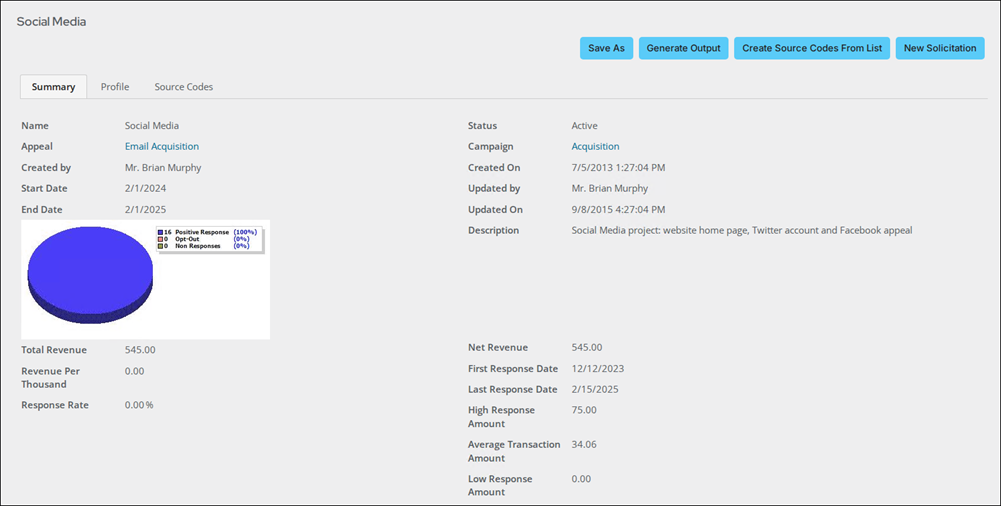Last updated on: January 06, 2026
iMIS Campaigns allows your organization to define and manage a coordinated series of marketing tactics, manage the responses, and analyze the results. This gives your organization the flexibility to support any marketing need, from basic to complex. There are three areas that work together to help you achieve your marketing objectives:
- Campaign Management – Plan, create, and track single or multiple campaigns
- Segmentation – Segment contacts and prospects according to demographic and behavioral patterns
- RFM Analytics – Rank a contact's past transactions with your organization
You can use Campaign Management alone or you can use the three modules together to take advantage of data analytics and advanced segmentation capabilities. This will help your organization target the efforts in the most cost-effective and customer-focused manner.

Note: You can hide the Campaign navigation item if necessary. See Modifying menus and task lists for more information.
In This Article
Campaign Management hierarchy
Campaign Management uses a four-tier campaign structure, so you can plan actions and monitor results on a detailed basis. Out-of-the-box, a default hierarchy is used, however, you can rename the hierarchy to reflect your organization's or industry's terminology.
Campaign - A strategy to accomplish a single marketing goal, such as a membership drive, a fundraising campaign, an annual convention, or a legislative initiative. Campaigns are the highest level of measurement and are typically project-driven.
Appeal - Each major marketing effort of a campaign, usually associated with a drop date. An appeal can be:
- A phase of the project, such as "First Request" or "Airwaves Blitz"
- A portion of the campaign targeted to a specific group of contacts or prospects
- A portion of the campaign assigned to an internal group (generating mailing lists, designing artwork, managing responses)
Solicitation - A series of communication pieces for an appeal. For example, a "First Request" appeal might send one message to previous donors or customers, and a different message to prospective donors.
Source Codes – Numbers assigned to each possible response for a specific solicitation(such as reply cards, phone calls, donations, or purchases). Your organization tracks responses with these numbers to measure the effectiveness of each solicitation. Source codes are the most granular level of measurement in a campaign.
Communications and reporting
iMIS communication tools help you to efficiently build customized messages for your contacts and prospects. You can gain valuable information about the effectiveness of your campaign with reports. These messages and reports can be generated at any level of a campaign.
Default templates for messages and reports are provided and are easily tailored to your organization's specific needs. Review the following articles to learn more: